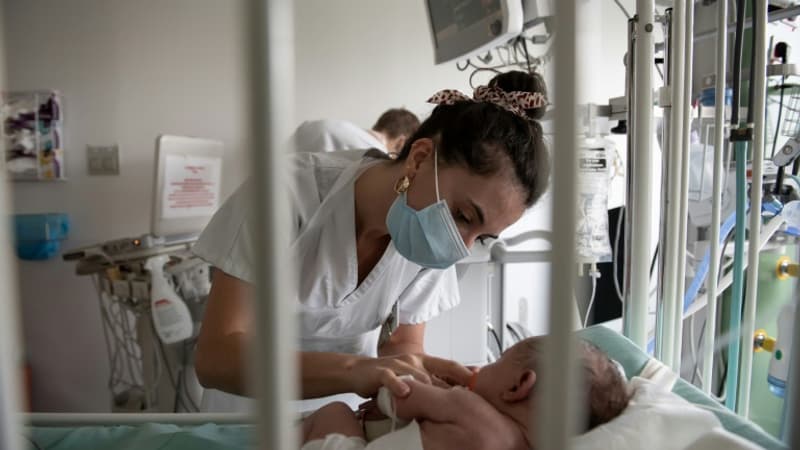The tension in hospitals may not ease immediately. The number of emergency visits and hospitalizations for bronchiolitis reached “levels higher than those observed in epidemic peaks for more than 10 years,” the week of October 31 to November 6, according to Public Health France (SPF).
In its weekly bulletin, published this Wednesday, the public body dependent on the Ministry of Health reports that 6,891 children under two years of age were treated this week in the emergency room for bronchiolitis in France, 7% more than the previous one. . 92% of them were under one year of age and 2,337 (34%) were hospitalized.
The proportion of bronchiolitis among hospitalizations in children under two years of age is also higher than the norm: it accounts for “50% of hospitalizations after an emergency room visit in children under two years of age,” versus “about 40% during the peaks of previous seasons,” according to SPF. Faced with this wave, pediatric services are saturated and some are forced to transfer babies, due to lack of places to house them, sometimes several hundred kilometers from home.
An early epidemic
All of mainland France is currently in an epidemic situation of bronchiolitis, according to the alert level determined by SPF. The organization notes that the intensity of the epidemic is “generally more marked in the regions of the northern half of France.”
Bronchiolitis is a respiratory infection of viral origin, that reaches infants and has an average duration of ten days. It usually begins with a cold and in infants is often characterized by coughing and rapid, wheezing. This disease is usually benign. according to health insurancebut very young children can develop a more severe form that requires hospitalization.
The seasonal epidemic “generally begins in mid-October and ends at the end of winter with a peak during the month of December,” explains the Ministry of Health. on your site.
But this year, the epidemic is particularly early in France, according to Health insurance.
Adults and older children with the respiratory virus usually have no symptoms or just a cold. Many people are contagious unknowingly, according to the ministry. This virus spreads easily between people through saliva, coughs, and sneezes, and can stay on hands and objects.
During the winter of 2020-2021, the extent of the epidemic was much lower than last season due to the application of barrier gestures and confinements, in the context of the Covid-19 pandemic.
During the winter of 2021-2022, on the other hand, the bronchiolitis epidemic was of a higher than average magnitude, due to a herd immunity deficiency for children born after March 2020according to a published study in review infectious diseases now in June.
30% of children under 2 years of age are affected by bronchiolitis each year, according to the Ministry of Health. However, deaths from this disease are rare. To reduce the risks, the ministry recommends “limiting visits to the circle of very close and not sick adults” before the child is three months old, washing hands before and after any contact with the baby and wearing a mask in case of a cold. , cough or fever.
Source: BFM TV


